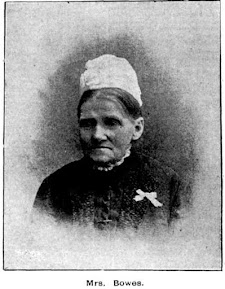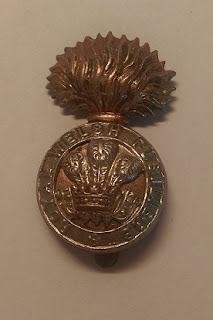A life of ambition cut short
Allez, Allez Australie - as we chase those medals and what special medals they are. Designed by LVMH jeweller, Chaumet, each contains a small piece of the original iron from the Eiffel Tower in its centre with the colour of the medal radiating out from that point in a hexagonal style. Tres magnifique et elegant!
We are at the halfway point of the Games and this week's blog, the second in French related ones, highlights another French man who made Australia his home.
EDMOND MARIE MARIN DE LA MESLEE
Edmond was briefly mentioned in the blog published on the 24th of June, but this piece will go into more detail and also highlight his wife and her ancestors.
Edmond was born on the 8th of November 1853 to Colonel Edmond la Meslee and his wife Amelie in Nantes, a city on the Loire River in Upper Brittany, a region of Western France. Nantes is considered to be the birthplace of the Surrealist art movement and the third highest ranking city in France after Paris and Lyon. It is also the largest Port in France and was unfortunately responsible for nearly half of the 18th century French Atlantic slave trade.
A Panoramic view of Nantes 1906 - vintage posters with sincere thanks
A young Edmond was educated to join the Navy, and he served on land at the Battle of Sedan in September 1870. This was a battle in the Franco-Prussian War where the French army was decimated by the Prussian army with Napolean III surrendering to General Von Bismarck with his troops taken as prisoners of war.
After that disaster, Edmond left the forces and taught French in the Jesuit College at Mauritius. On the 16th of January 1876 he sailed alone on the "Alphington" for Melbourne. He became the private secretary to the French consul-general for Australia and later accompanied him and his party to Sydney and then onto Brisbane touring the Darling Downs. In 1878 Edmond became the temporary draughtsman in the Department of Lands in Sydney and worked in the Surveyor-General's Office. The following year he became a member of the Royal Society of NSW.
In January 1880, he married Clara Louisa Cooper and later that year embarked on a tour of north-western NSW with Russell Barton, a pastoralist and Politician.
1881 saw Edmond becoming naturalised, his papers signed by no less than Sir Henry Parkes.
The following year he visited France and read a paper to the Society of Geography in Paris which described his travels in the outback and impressions of Australian life and society. Returning to Sydney he was involved in the founding of the Geographical Society of Australasia, organising its first conference in Melbourne in 1884. He became known as a person who was more interested than any local or British born colonist who supported the growth of the Australian nationality. He contributed positive articles to many Franch publications and published a long article on Sir Henry Parkes and the federation movement. Edmond was known to have performed much research for Parkes in European books and other publications.
Edmond's wife Clara was born in 1857 in Bathurst located in the central west of NSW to Alexander Edwin Henry Cooper and his wife, Louise Matilda Lisson/Gorrick and was one of @ 10 children. Louises's father was the former bare knuckle fighter John Lisson Gorrick aka Bungaree, and her mother was Sarah Yeomans a former convict. She was a cousin of Napolean Jean Lisson who was previously mentioned in an earlier blog. (please click on his name in the tag list to see that piece). They are buried in the old Anglican area close to Railway Street Lidcombe.
Grave of Alexander Cooper and his wife, Louise - find-a-grave.
Her father Alexander was the son of Robert Cooper and his third wife Sarah May and was one of twelve children of that union.
His father and Clara's grandfather was Robert Cooper. Robert was a distiller and proprietor of two public houses in London which did quite well. He was convicted in 1812 of receiving stolen goods to the value of £3,000. Robert advised that he hadn't stolen the goods but merely smuggled them as was the case in the past but nonetheless he was transported for 14 years. He was not a troublemaker and was granted a conditional pardon in 1818.
It wasn't long before he opened a shop and ran trading operations to Van Diemen's Land in a small ship he had purchased. He also obtained an Auctioneer's licence and opened a distillery and brewery. Along the way his ventures included milling flour and bread, cedar cutting and production of gunpowder.
By the early 1830's he was one of the wealthiest men in Sydney and was one of the principal shareholders in the Bank of NSW. He owned land around Sydney including Paddington and Chippendale. Robert even stood as a candidate in the NSW Legislative Council but was unsuccessful.
Robert Cooper - Wikitree
He established Willeroo Station on the banks of Lake George near Canberra, commissioned Paddington Town Hall and established Sydney Grammer School.
His first wife had died in England in 1818, and he arranged for his six children to be brought out to Sydney after his emancipation., His second wife died in 1821 leaving four more children. He married for a third time to Sarah May who was some 20 years his junior. He promised to build her the biggest and best house in the Colony, and he did, Juniper Hall, which still stands in Paddington. He needed a big house as he and Sarah went on to have 12 children. Whilst Sarah was overseas for a few years seeing to some of the children's education, Robert fathered two more children with Catherine Savage, believed to be his housekeeper!
Juniper Hall Paddington - Wikipedia
He was known as "Robert the Large" or "Lusty Cooper" but also as a kind-hearted man. He died from a stroke at the age of 80 in 1857. Originally buried in Devonshire Street Cemetery, he was reinterred in Rookwood in 1901 when that cemetery land was requisitioned for the expansion of Central Railway Station. He now lies with family members in the Old Anglican area near the Naval Section.
reinterred grave of Robert Cooper and family members - Find-a-grave.
Edmond and Clara had five children, four sons and one daughter. In 1893 prior to undertaking a ferry ride on a beautiful day they had already buried one son and their only daughter. They both drowned on the 17th of December 1893 in the Sydney Harbour boating tragedy that saw the death of seven people. They left three small children and many relatives to mourn their loss. They lie in the Old Catholic area near East Street Lidcombe.
Grave of Edmond and Clara La Meslee - author's own collection.
It was such as tragic end to a short life for both of them. Edmond had left a possible career in the French Military to start a new life 12,000 miles away. It all started out so well and his career seemed certain to be a success, but it was not to be.
For today's blog I have sourced ancestry.com, Wikipedia, the Australian Dictionary of Biography; a piece by Russel Ward relating to Edmond and an entry by R.L. Knight with regards to Robert Cooper. I have also accessed the olympics.org site in relation to the medals at the Paris Olympic games as well as other references.
If you have any insights into the contents of this blog today, please feel free to add a comment below or at the Group Factbook page found under
rookwood cemetery discoveries
or simply send me a message via
lorainepunch@gmail.com
Auvoir until next week!









He led an interesting life.
ReplyDeleteYes Edmond and Robert both!
Delete